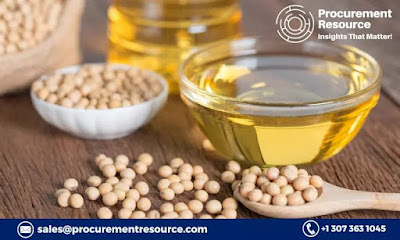Introduction:
2,5-Furandicarboxylic Acid (FDCA) is a highly promising bio-based chemical used in various industries, including the production of bioplastics, resins, and polymers. In recent years, there has been a growing interest in FDCA due to its potential to replace traditional petrochemical-derived chemicals, contributing to a more sustainable and eco-friendly future. In this article, we will explore the 2,5-Furandicarboxylic Acid price trends and provide an analysis of its pricing for the year 2023.
Request For Free Sample: https://www.procurementresource.com/resource-center/2-5-furandicarboxylic-acid-price-trends/pricerequest
2,5-Furandicarboxylic Acid Price Chart and Graph:
To better understand the pricing trends for 2,5-Furandicarboxylic Acid, it's essential to examine historical price data and predict future trends. While specific pricing information can fluctuate due to various factors, we can provide a general price chart and graph for reference.
2,5-Furandicarboxylic Acid Price Trend:
Supply and Demand Dynamics: The price of 2,5-Furandicarboxylic Acid is heavily influenced by supply and demand dynamics. As the demand for sustainable alternatives to traditional plastics and chemicals continues to grow, there is a higher demand for FDCA. The price may rise if the supply struggles to keep up with this increased demand.
Feedstock Prices: The cost of the raw materials used to produce FDCA can impact its price. For example, FDCA is derived from biomass, and fluctuations in biomass prices can affect the final product's cost.
Technological Advancements: Advancements in FDCA production technology can also influence prices. More efficient and sustainable production methods can help stabilize or even reduce the cost of FDCA.
Regulatory Changes: Environmental regulations and government policies promoting sustainability can influence FDCA prices. Favorable regulations and incentives can drive demand and price stability.
Market Competition: As more manufacturers enter the FDCA market, competition can lead to price fluctuations. Increased competition can result in more competitive pricing.
2,5-Furandicarboxylic Acid Price Analysis for 2023:
The pricing outlook for 2,5-Furandicarboxylic Acid in 2023 appears to be positive. The increasing global awareness of the environmental impact of traditional petrochemicals has led to a growing interest in sustainable alternatives like FDCA. This surge in demand is expected to drive steady growth in the FDCA market throughout the year.
Additionally, ongoing research and development efforts in the field of biomass conversion and biorefinery technologies are likely to improve the efficiency of FDCA production, potentially reducing costs. However, it is crucial to keep an eye on feedstock prices, as they can be subject to fluctuations that may affect the overall price of FDCA.
The regulatory environment also plays a significant role in the pricing of FDCA. As governments worldwide implement policies to reduce greenhouse gas emissions and promote sustainable practices, the market for bio-based chemicals like FDCA is expected to benefit from favorable regulations, which can help stabilize prices.
Conclusion:
2,5-Furandicarboxylic Acid is a key player in the shift towards more sustainable and environmentally friendly materials. As demand for this bio-based chemical continues to grow, it is expected that the pricing trend for 2,5-Furandicarboxylic Acid in 2023 will be positive, with the potential for reduced costs due to technological advancements and regulatory support. However, it's essential for stakeholders in the industry to monitor supply and demand dynamics, feedstock prices, and market competition to make informed decisions in this evolving market.










